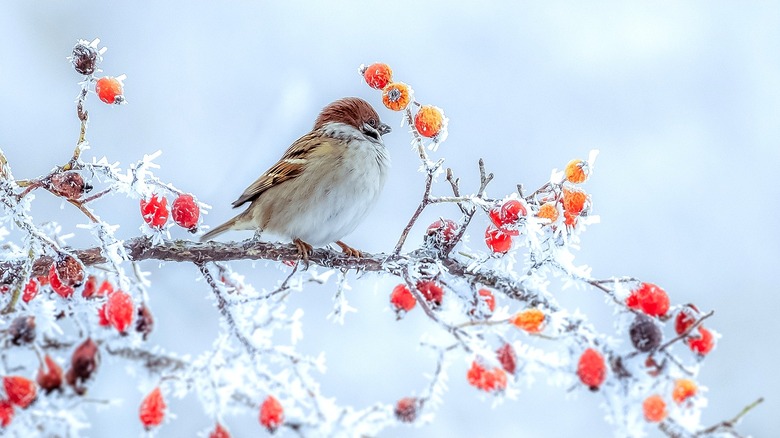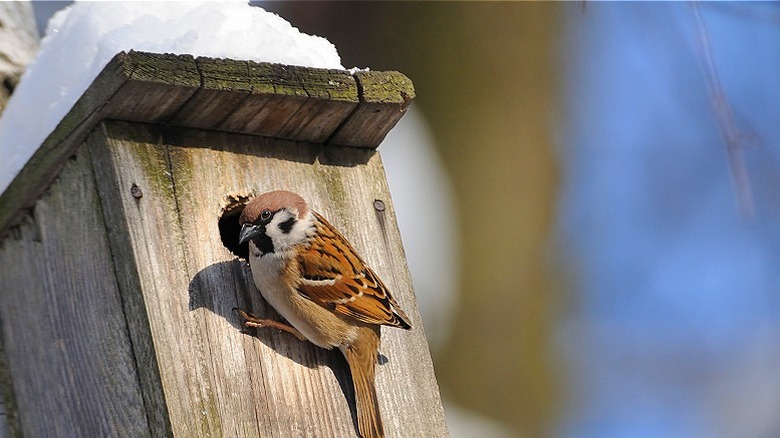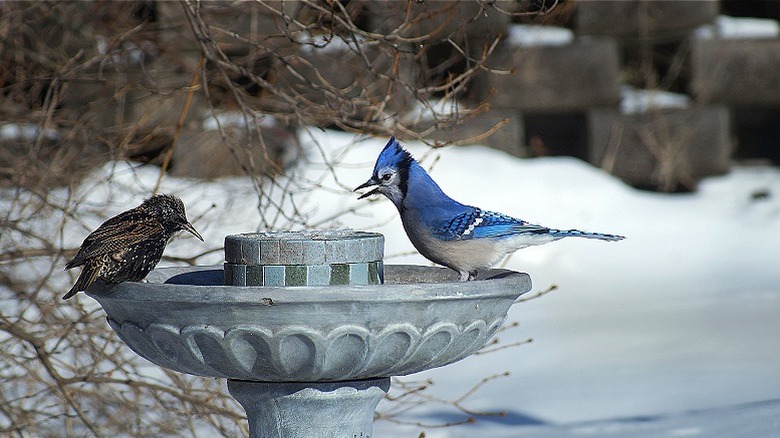How To Attract Birds To Your Yard During The Winter Season
The warmer months are notorious for colorful birds, but as the weather cools down, many of them begin migrating south to warmer temperatures. However, not all birds migrate during the winter. These birds are called resident birds and will often spend the winter in one region. In North America, some non-migratory birds include blue jays, northern cardinals, blackbirds, doves, finches, sparrows, nuthatches, chickadees, and woodpeckers. Birds that don't migrate especially need care in the winter when food sources are low or frozen, so creating an environment for them to thrive is essential to attracting birds to your yard in the colder months.
You'll want to create an environment that provides birds with the basic necessities they need to survive during winter. Once they know they'll have access to resources, birds will be more likely to flock to your home. Create a space that will provide shelter for birds from the elements, such as snowfall and low temperatures. To help birds survive the winter, you'll also want to provide them with food and water. Having a feeder and a place to enjoy fresh water will help sustain birds when their normal food sources are low.
Create a comfortable and safe habitat
In the winter, birds need shelter to help keep them warm and protected. If you want winter birds to frequent your backyard when the weather turns cold, provide them with the shelter they'll need to survive. Roost boxes, which can protect avian visitors from snow, wind, and low temperatures, can be outfitted with wooden dowels at different levels to create perches. You can also add hardware cloth to one of the inside walls to allow woodpeckers to cling to them. Roosting boxes are ideal for backyard birds like bluebirds, titmice, nuthatches, and small woodpeckers.
You can also use your backyard plants to create a shelter and food source for roosting birds in the winter. Holly, sumac, wax myrtle, and hawthorns, for example, provide fruit that birds can feed on. Similarly, coneflowers and black-eyed Susans offer birds seeds for sustenance. Plants like holly, evergreen trees, and shrubs like witch hazel, meanwhile, create a shelter birds can live in during the colder months while also adding beauty and texture to your winter garden and yard.
Provide water for the birds
Water is essential for birds, and by providing clean, fresh water in your backyard when temperatures drop, you can attract birds to your yard during the winter season. Note that winter birdbaths should be sturdier and thicker to prevent cracking and leaks when temperatures change. You'll also want to place birdbaths in a sunny spot to keep the water in a liquid state. If your winters don't get a lot of sun or you live in a particularly cold climate, heated birdbaths might be the better option compared to a traditional one. You can also add rocks to help provide places for the birds to perch.
Along with providing birds with water, ensure the water you're providing is safe and sanitary throughout the season. You'll want to replace the water and clean out the birdbath every two or three days or whenever the water starts to look cloudy. Scrub the surface of the birdbath with a solution that's 1 part vinegar to 10 parts water and rinse it out well before refilling it with fresh, clean water.


